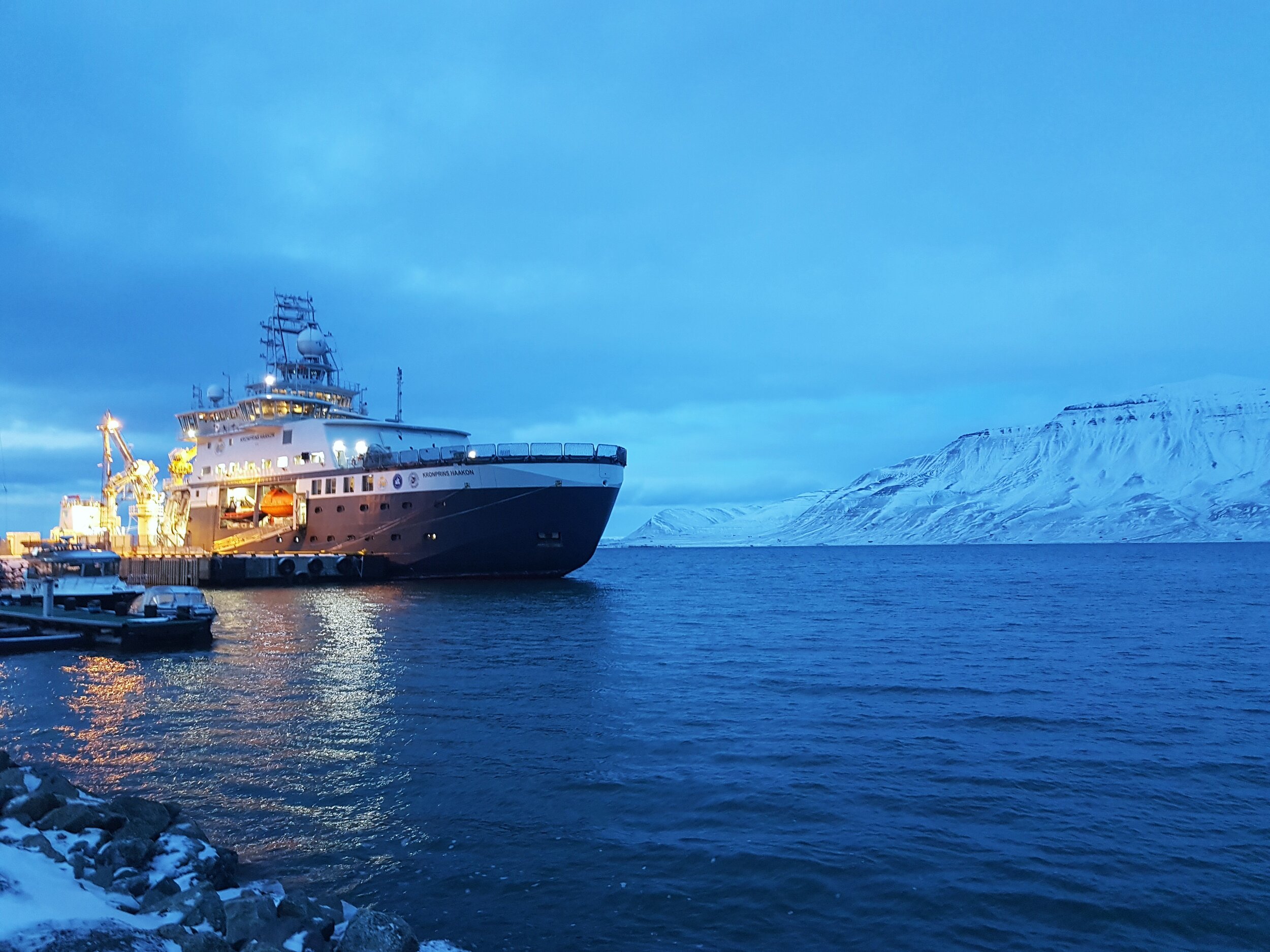Braving the stormy seas
All photos and text by Mariana Esteves.
Blog originally posted on the CAGE website.
After a nine hour transit on our third day of cruise, we finally reached the first station in the Fram Strait. Unfortunately, we were put on a weather hold until further notice as high winds and large waves prevented us from initiating our work. The storm remained for the majority of the day, allowing for some dramatic pictures to be taken from the observation deck as the waves crashed against the bow (front section of the ship) and reached the helideck on deck 6! The weather hold lasted for the majority of the day and for many, even the most able seaman on-board, this was a difficult time to be on a ship as they try to get used to the motion of the ship during the storm.
Thankfully, the RV Kronprins Haakon is very stable even when passing rough seas, making it very comfortable for those on-board carrying out their day-to-day activities. Which on this day included the final preparations of the equipment, laboratories and procedures that we would undertaken once the cores arrived on deck. In addition to this, we were able to enjoy the facilities on-board the RV Kronprins Haakon, such as the observation deck, gym, library, ping-pong table, and day room. The discovery of the ping-pong table was a particular highlight for some during the transit period!
Testing the ping-pong table during the transit to the first station.
Later this evening, the weather cleared up enough for us to begin our work (and get an amazing view of Svalbard). First we deployed a CTD (oceanography instrument used to measure conductivity, temperature and pressure of seawater) to collect water samples from the 900m of water column, before deploying the piezometer (an instrument used to measure ground pressure). Following this we will prepare the multi-corer and giant calypso corer.
Nabil Sultan, Pierre Guyavarch, and Mickael Rudeaut from Ifremer discussing with the engineers and technicians on board during the retrieval of the piezometer.













